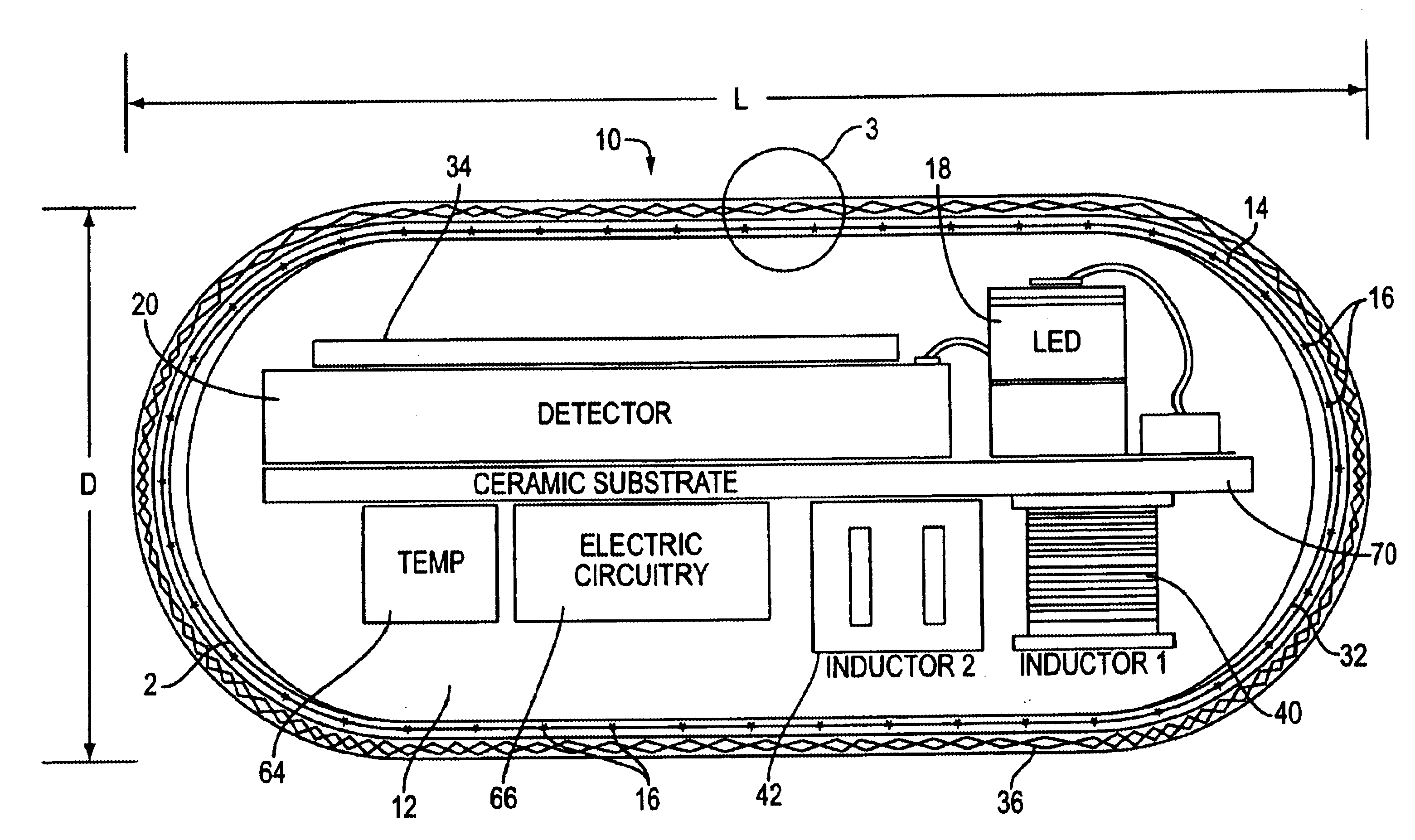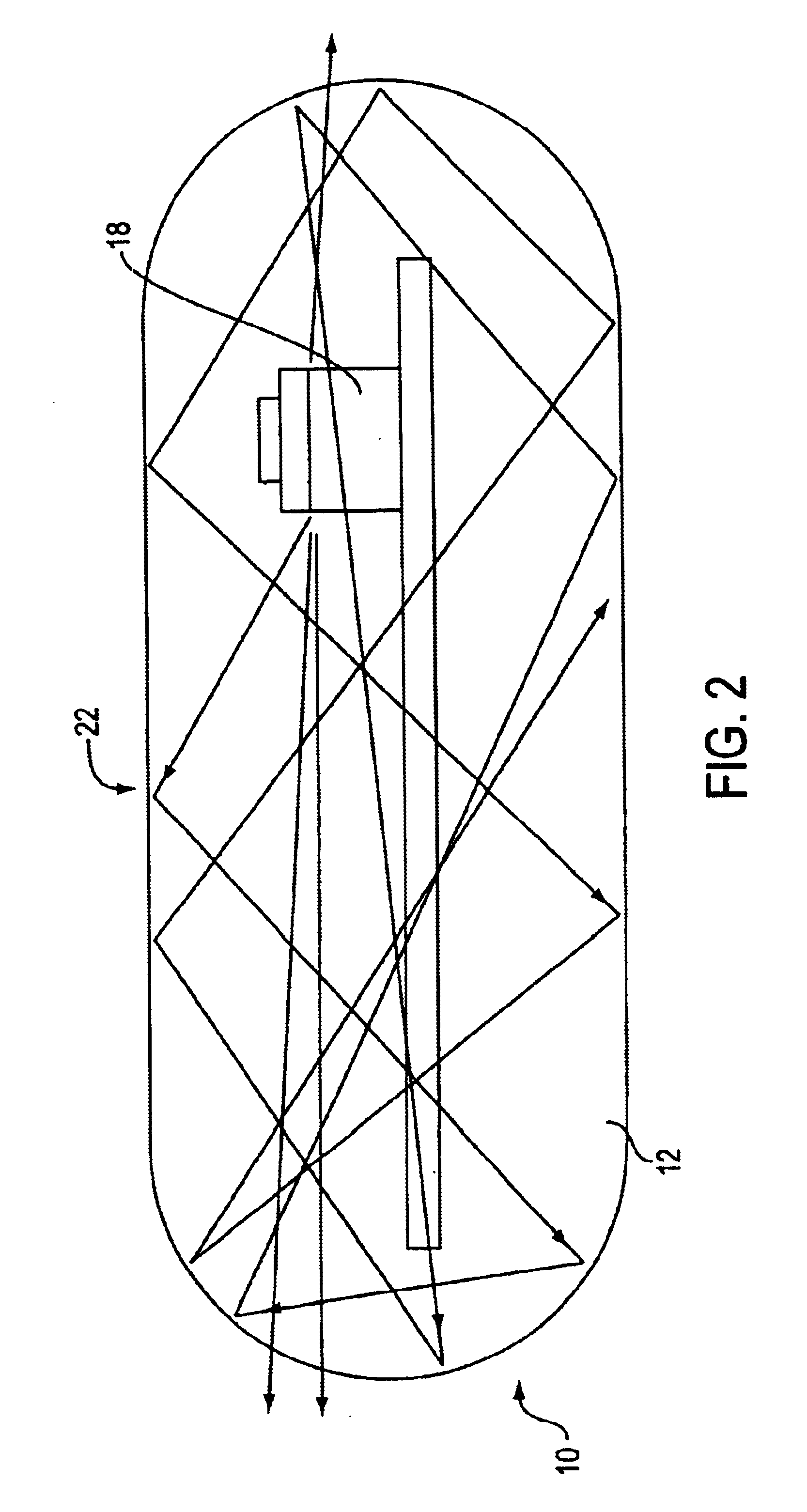Optical-based sensing devices
a sensing device and optical technology, applied in the field of optical sensing devices, can solve problems such as excitation of fluorescen
- Summary
- Abstract
- Description
- Claims
- Application Information
AI Technical Summary
Benefits of technology
Problems solved by technology
Method used
Image
Examples
first embodiment
FIGS. 14(A)-14(B) illustrate a sensor 10 incorporating an optical reference channel. As shown, the sensor 10 preferably includes: a sensor body 12; an indicator membrane 14' having fluorescent indicator molecules distributed throughout the membrane; a reference membrane 14" having fluorescent control indicator molecules distributed throughout the membrane; a radiation source 18, such as for example a single LED similar to that described herein-above; an indicator channel photosensitive element 20-1, made, for example, similar to photosensitive element 20 described herein-above; a similar reference channel photosensitive element 20-2; a circuit substrate 70 (shown schematically with exemplary circuit elements 70i mounted thereto); a power source 40, such as for example an inductive power coil as shown; and a transmitter 42 such as for example a transmitter coil as shown. In any of the embodiments described herein, the membranes 14' and 14" can be made, for example, with materials sim...
second embodiment
Once again, the arrangement of the parts within the sensor can also be varied by those in the art. For example, FIGS. 17(C)-17(D) show a second embodiment similar to the embodiment shown in FIGS. 17(A)-17(B) with the indicator membrane 14' and the reference membrane 14" on the same side of the circuit board 70 and with a single radiation source, e.g., LED, 18--similar to the embodiments shown in FIGS. 14(A)-14(C). All of the applicable variations described above with respect to FIGS. 14(A)-14(C) and to FIGS. 17(A)-17(B) could be applied to the embodiment shown in FIGS. 17(C)-17(D).
As another example, FIGS. 17(E)-17(F) show another embodiment similar to the embodiment shown in FIGS. 17(A)-17(C) with the indicator membrane 14' and the reference membrane 14" on the same side of the circuit board 70 but with two radiation sources, e.g., LEDs, 18-1 and 18-2 similar to the embodiments shown in FIGS. 15(A)-15(C) but with the LEDs spaced further apart in the illustrated example. All of the ...
PUM
 Login to View More
Login to View More Abstract
Description
Claims
Application Information
 Login to View More
Login to View More - R&D
- Intellectual Property
- Life Sciences
- Materials
- Tech Scout
- Unparalleled Data Quality
- Higher Quality Content
- 60% Fewer Hallucinations
Browse by: Latest US Patents, China's latest patents, Technical Efficacy Thesaurus, Application Domain, Technology Topic, Popular Technical Reports.
© 2025 PatSnap. All rights reserved.Legal|Privacy policy|Modern Slavery Act Transparency Statement|Sitemap|About US| Contact US: help@patsnap.com



